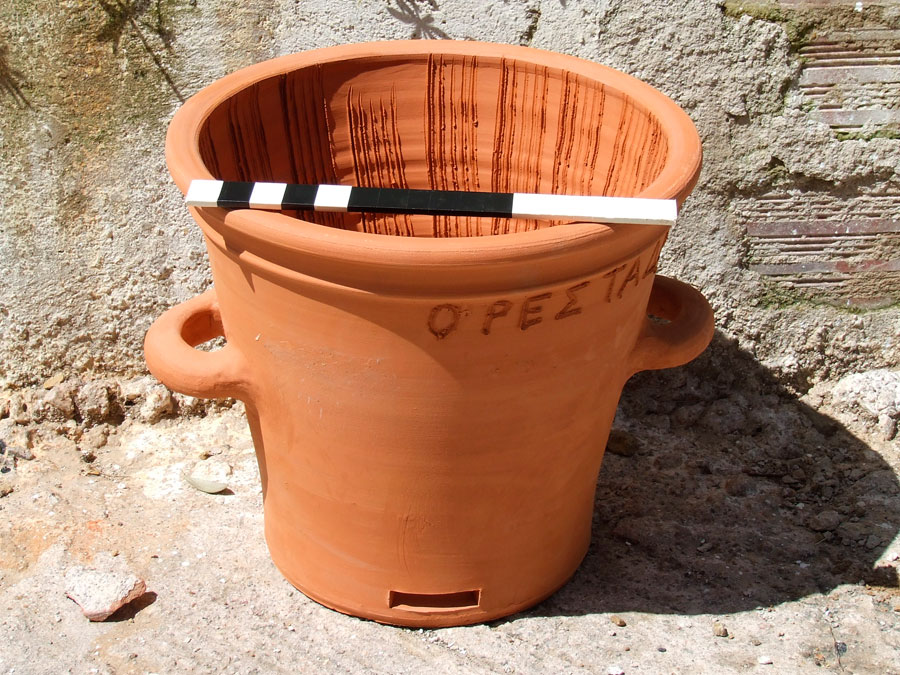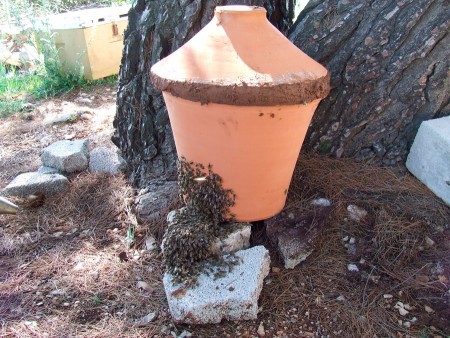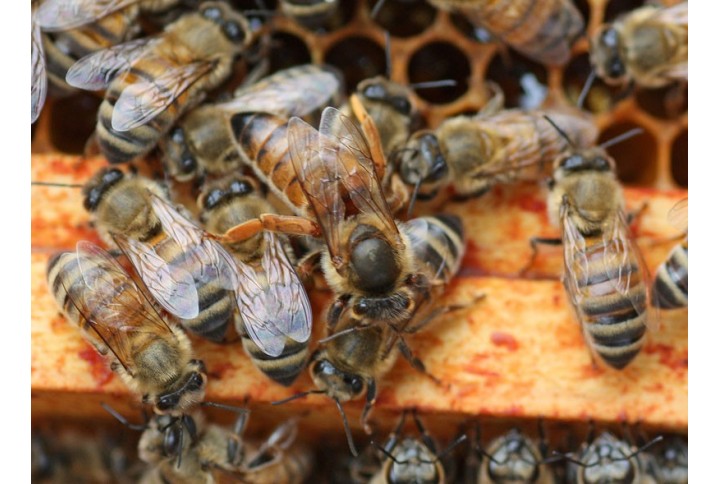PROFESSIONAL BEEKEEPING WITH IMPROVED TRADITIONAL MOBILE HONEYCOMB HIVES!

With Isidoros (Sideris) Tsiminis, a well-known professional beekeeper of Attica, we have been working together for about a year and a half as part of an experimental archaeology program in which we both participate. It is precisely because of this cooperation that we have become sociable with his 'heretical' views on the practice of beekeeping.
The beekeeper in question considers that the advent and universal prevalence of the framework hive (achieved to a large extent by its free transfer or its benefit) has had rather negative effects on the beekeeping of our country! Mainly because valuable beekeeping knowledge has been lost for centuries. In his view, beekeeping with (traditional) mobile honeycomb cells, in the climatic conditions of Attica or similar, may be more efficient in products than that of modern frames, while the costs are significantly less – no frames, wires, candle-keeping, labour for a range of manipulations, special equipment, etc. are required.

We have also become aware of his plans, on the basis of which he intends (already started) to put his views into practice, practicing beekeeping at a professional level using improved kettles! After three years of experimentation with traditional brass, he came up with a series of changes of his own inspiration and ordered the construction of 500 such improved kettles, which he has now received.
The differences between the clay cells of Tsimini and the traditional brass are related to the shape – they show a more pronounced convergence of the side walls towards the base, in size – they are noticeably smaller, in the existence of a floor near the rim for the placement of the waxers and in the different cap shape, which has the shape of a pole,thus creating space above the waxers. This lid applies to the rim of the blister. Above the entrance there is a circular hole 1.5 cm in diameter. as is the case in most of Crete's boils, but with a diameter there at 1 cm. In the traditional boils this hole was made, according to Chr. Zymbragoudaki (1979), for "the exhalation of the flock", while "at its height was the level of separation of the appropriate space for the development of the flock (upwards)". Some of the changes to the kettle that he had originally thought about and for which he had spoken to us a year ago (Mavrofryd, 2007), seem not to have paid off as expected and were ultimately rejected. The (internal) dimensions of the cell are as follows: height 38 cm, base diameter 19,5 and lip 41,5 cm. Its entrance is 7 cm long and 1 cm high. and the lid height 18 and diameter at the base 42 cm.

Recently, Tsiminis presented these hives in his booth, in the context of the 5th Panhellenic Congress of Bee Therapy "Meliama".
The honeycombs, nine in each hive, are the inspiration of Tsimenis, have a specific size depending on the position they occupy in the hive and can thus be used in all its hives, but only in the specified position for which they are intended. For example, it is not possible for a honeycomb from the edge of the cell to be placed in the centre or vice versa. They consist of a gel which bears in the center a fissure in which a small part of a honeycomb leaf can be placed to start building bees and pads, so as to create the necessary "bee space" and at the same time allow bees to move above the honeycombs in cases of feeding or treatment.

With these hives the beekeeper aims to get certification and practice organic beekeeping. Because in this case the bee builds new honeycombs every year, it is thought that part of them will be available for sale as such, with the honey or (and) the bread of the bees (stored in the pollen cells) that it carries. All this undoubtedly gives a new dimension to the project, which did not exist before.

It is not known to S. Tsiminis, but similar to his point of view regarding mobile honeycomb hives and their effectiveness, it seems that P. Georgantas, who served as department head of beekeeping at the Ministry of Agriculture, also seems to have. From this position he had sent a circular in 1963 on "Expansion of beekeeping without abolishing the domestic type of hives" (Anonymous, 1964). It refers specifically to mobile wax cells, which in his view offer considerable quantities of honey and wax, while at the same time being a source of replenishment of disasters in apicultures by pesticides, diseases and natural disasters and urges them not to be replaced. He goes further and closes his circular by saying that especially for N. Attica, the apiary of astomos "is imposed as a sacrifice". For the record, georganta's encyclical and views have been hessed by Ag. Typaldo Xydia and the leaders of the Consortium of Cooperatives of Southern Greece (Anonymous, 1963 & 1964).
Finally, in order not to go too far, it may be interesting what has been said, but the correctness of the views and in general the success of the whole project of S. Tsiminis, for which, of course, business risk has been taken, which is far from negligible, remains to be proved in practice. So, in anticipation.
Giorgos Mavrofrydis Archaeologist, Beekeeper melissokomia@arria-trans.gr
Bibliography
Anonymous, 1963. It is recommended that domestics should not be replaced by Europeans. Hives! The Bee, 5(59-60): 173-174.
Anonymous, 1964. The circular. Bee, 6(61): 15-18.
Mavrofidis, G. 2007. Beekeeping with movable honeycombs. A timeless practice with ancient origins. 3rd Scientific Conference of Beekeeping, A.U.Th. 21-22 Apr. 2007. Announcements (to be issued).
Zymbragoudakis, Ch. 1979. The bee and beekeeping of the island of Crete. A tribute to Greek beekeeping. Athens, p. 47-52.






Comments
No comment at this time!
Leave your comment